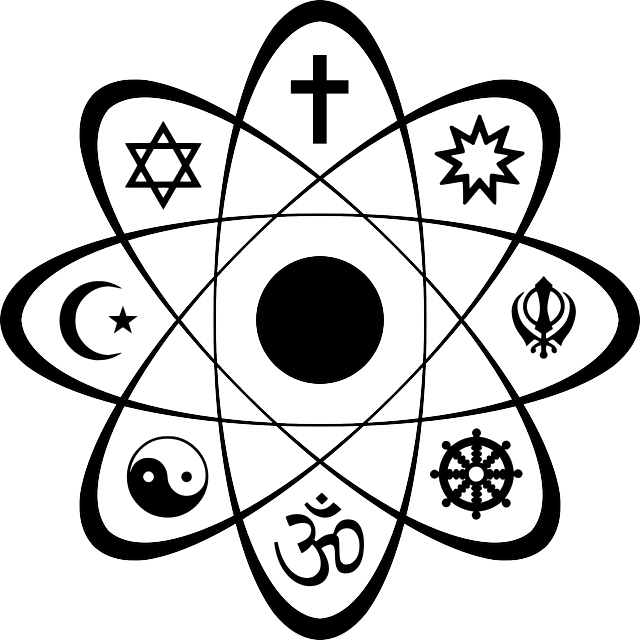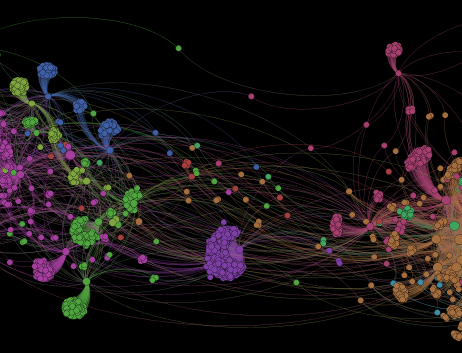Science and Religion's Shared Humanity
01 Aug 2014
Science and Religion
Science and religion are both subjects which are often pitted against one another. Much has been said in this debate that is outside the scope of this blog. Those interested can read works by minds like Alvin Plantinga, Thomas Nagel, John Lennox, or Richard Dawkins.
But what I wanted to do from a graph perspective is quantitatively visualize how this debate is realized in Wikipedia's knowledge graph (sometimes the very place where these debates rage). What I found about the respective worlds of science and religion on Wikipedia didn't surprise me, but what brought them together did.
Building the Knowledge Graph
This being my first graph visualization for this site (and my first time visualizing knowledge classification in general), I had to first build a tool to extract the knowledge graph from Wikipedia. Once I work through the bugs with a few visualization types, I will later write a page describing how this tool works and open-source it on github. But the gist of it is it takes a set of URLs as starting points on the graph, a maximum depth to traverse links, a description of what links and pages to walk, and what attributes to extract from the HTML pages as it does so. I've written it so that it is not specific to anything other than HTML.
I first tried just going to the article pages. What I quickly found out is how far off-topic you can quickly find yourself by walking the knowledge graph even by just two steps. This is probably familiar to anyone who has gone to Wikipedia to look up something specific only to realize 45 minutes later that they didn't initially intend on reading a fascinating page on the historical significance of woven carpet through the millennia.
So instead I decided to use the Wikipedia portal page system. This provides a kind of meta topology of categories of knowledge which seemed more appropriate for what I was searching for. I wasn't as interested in understanding how protein folding applications related to transubstantiation as much as I was how the topic of biology was related to Christianity in general.
After I tuned the config file driving my tool to properly walk the portal space in Wikipedia, I pointed it at the science portal and religion portal and ran it. One thing I noticed is that I'd have to filter out links to featured article lists and archives or external sites which detract from visualizing Wikipedia's knowledge topology showing how topics are semantically related vs. ephemeral lists designed to help readers get started.
The Graph

| Nodes | Edges | Communities* |
| 3117 | 7949 | 13 |
* - The number of communities varies as I tune the sensitivity of the community detection algorithm I ran
Insights
After I ran a Force Atlas layout [PDF] and community detection algorithm in Gephi, I could quickly see the distinction between the science community on the left and the religion community on the right (with some outlier groups due to pages that serve as large indexes). Both are tightly knit, independent communities though the religion community of portal pages has a higher average in/out degree than the science community of portal pages.
The top 5 pages based on number of connections in the religion portal community (ignoring the staring point) are:
Note: I'm only selecting one representative for these counts which has the highest degree (in + out link count). In actuality there are usually many other nodes with similar in/out link counts.
| In Links | Out Links |
| Mythology (61) | Indian religions (159) |
| Spirituality (60) and general meta-categories of belief systems | Buddhism (119) |
| Buddhism (59) and major world religions and texts | Bible (108) |
| Christianity in India (58) | Nontheism (103) |
| Christianity portals (21) | Greek mythology (102) |
The top 5 pages based on number of connections in the science portal community (ignoring the starting point) are:
| In Links | Out Links |
| Biology (15) | Technology and applied sciences (193) |
| Natural and physical sciences (13) | Health and fitness (113) |
| Technology and applied sciences (12) | Natural and physical sciences (110) |
| Medicine (8) | Biology (71) |
| Biotechnology (5) | Chemistry (53) |
Connections
What was most interesting to me, and the original motivation in doing this analysis first, was to look at the common links between the two communities. Often heated disagreements between two world-views come from a lack of shared vocabulary and knowledge.

Here we can see several different communities (generally from top-left to bottom right):
| Color | Community |
| Science | |
| Mathematics | |
| History | |
| Social Sciences and Philosophy | |
| Culture and the Arts | |
| Belief systems and Spirituality | |
| Religion |
Again, I want to stress that community detection is a bit of an art. I could tune this to just find two communities (science and religion) or I could tune it so that just about any triad of nodes is considered its own unique community. The art is in playing with the sensitivity of the detection algorithm to tease out the resolution representative of the data. For example, I wouldn't lump "Social Sciences" and "Philosophy" together, but at this resolution they happen to be.
Meta Take-aways
After looking at the communities that interconnect the Science and Religion knowledge classes it becomes clear that if we remove or ignore them these two classes would break apart. In fact, the advocates for either science or religion that take the most heat are scientists or religionists who try to debate or understand one another without shared contexts like spirituality, culture, history, art, or philosophy. In a way, these connecting classifications of knowledge act like cell receptor proteins as they connect the largely autonomous cell to the larger system to create life. And just like how a cell would wither and die without being able to communicate and interact with the system around it, knowledge categories would grow stagnant and myopic without the knowledge systems that surround it. And rather than try to reduce all knowledge to one category or another, understanding the various contexts and life that surround it can activate discussions, shared experiences, and discoveries that otherwise would not be possible. This is an attribute of most knowledge classification systems which a graph analysis is able to readily see.
Interested in seeing more visualizations and analysis like this? Have general feedback or an idea? Feel free to contact me.
 AllThingsGraphed.com
AllThingsGraphed.com